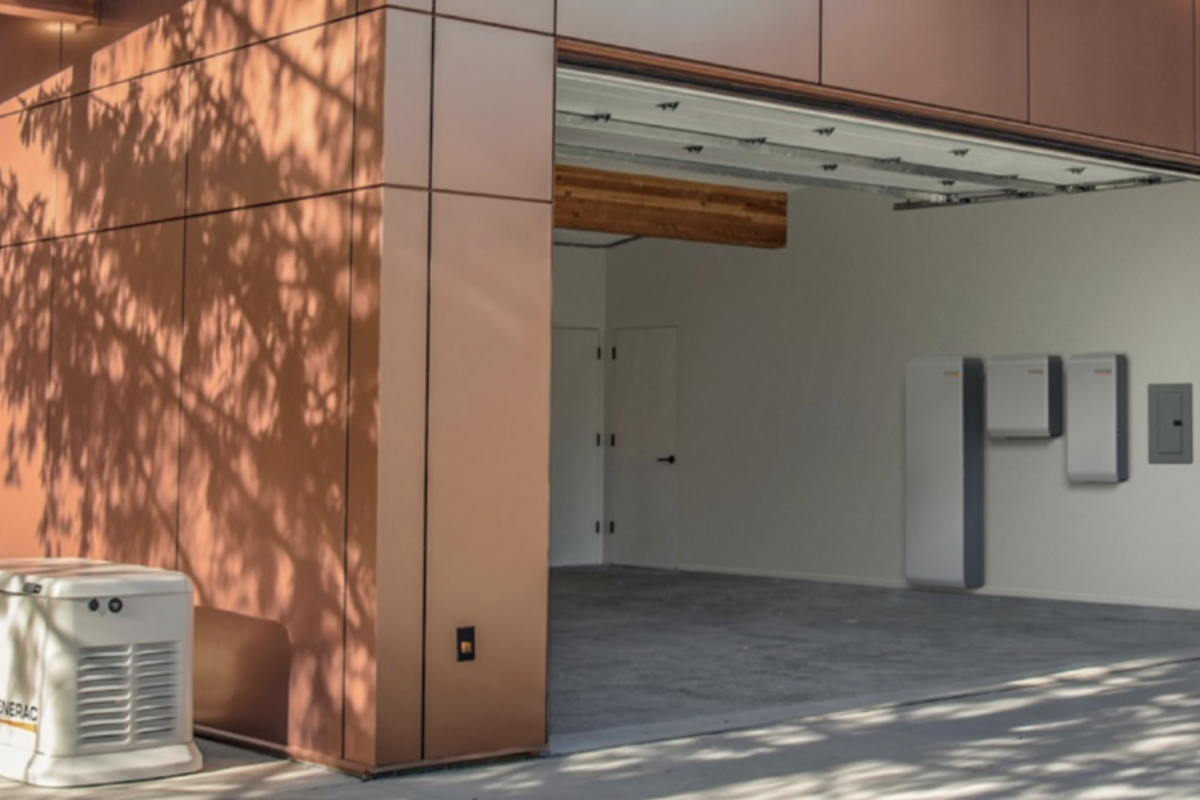From pv magazine 02/2020
Just 20 people worked for Northvolt two years ago. It has now grown to about 500 staff members. Sara Hermansson, Northvolt’s technical recruiter, informed an audience of this development at event held in Berlin in October 2019, hosted by the EU-funded Innoenergy group. The biggest obstacle to Northvolt’s development is finding the right people and teaching them how to make batteries, said Hermansson – who appeared positive that all other aspects of the company’s business (e.g., the supply chain) are already being dealt with successfully.
Hermansson’s criterion when selecting new staff, she explained are not scientists who aim to develop new battery chemistries, but engineers who are willing to work on existing science to manufacture batteries that are cheaper and more sustainable.
Marcus Ulmefors, a data scientist and battery modeler for Northvolt since April 2019, agrees. Speaking in December at Imperial College London, he told an audience of academics and technology enthusiasts that the company does not design entirely new products. “We rather try proven technologies and aim to improve them, but the key aim is to achieve efficient manufacturing at scale and with good quality,” he said.
Clean manufacturing
Both Hermansson and Ulmefors stress that Northvolt aims to manufacture batteries using electricity from renewable energy sources. This adds to the company’s sustainability targets, but also helps it to manufacture cheaper batteries.
The company currently operates an R&D laboratory and a demonstration line in Västerås, near the Swedish capital Stockholm. Its main production site for battery cells is in Skellefteå, northern Sweden. The Northvolt Ett factory in Skellefteå started construction in October 2019, immediately after it was granted all the required environmental approvals, and is expected to produce its first batteries in 2021. Until then, Northvolt can rely on the Västerås facility, which commenced commercial production in December.
Meanwhile, Northvolt and Germany’s Volkswagen Group announced a joint venture in September to establish the Northvolt Zwei 16 GWh factory in Salzgitter, in Lower Saxony, Germany. The Zwei 16 GWh factory is expected to start construction next year. And a further Northvolt assembly unit in Gdansk, Poland, is already under development.
“In Sweden, we use cheap hydropower, so our batteries will also get cheaper,” said Hermansson. In Germany specifically, added Ulmefors – given that the country has a different energy mix – Northvolt plans to find renewable energy solutions to power the energy-intensive processes of the Zwei factory.
A company spokesperson explained that Sweden’s Gigafactory, the Northvolt Ett, will boast an initial capacity of 32 GWh per year, expandable to 40 GWh per year. Therefore “in Sweden, where we do both upstream and downstream processes – meaning raw material input and finished battery cell output – we will require more than 2 TWh per year if we build 40 GWh of battery capacity,” the spokesperson said.
Electricity requirements for the German gigafactory Northvolt Zwei have yet to be published, but a Northvolt spokesperson said it “will be much lower since the most energy intensive part (upstream) will be done in Sweden. The active material will be shipped to Germany for final processing into finished cells.”
Finally, Northvolt reports that its Polish factory “has comparatively very low electricity requirements, because it is an assembly plant for battery packs, it is not a factory for battery cells. No official numbers are released for this plant, but they will be a small fraction in comparison.”
pv magazine has also learned that Northvolt plans to transfer the generated heat from one of its factories to a neighboring city, so that some of the company’s manufacturing processes are zero carbon. The company confirmed that this is a working plan, however its spokesperson added that “it is a little bit too soon” to communicate specific details at present.
Knowledge and control
“Battery-making was an industry in the previous decades, but now it’s a business,” Hermansson said at the event in Berlin. Apart from using cheap renewable energies (predominantly hydro power, and to a lesser extent wind energy) to lower manufacturing costs, Northvolt claims that at the core of its business model lies the knowledge and control of all parts of the supply chain.
The supply chain for batteries is long, and often Northvolt’s competitors do not know where they buy their raw materials from, argued Hermansson. This is definitely not the case with Northvolt, claimed Ulmefors, which buys raw materials (nickel, cobalt and lithium) directly from the mines that it also visits, so that the company has a clear idea what it buys and from where. “In the end, we are comfortable how things are sourced, how they are produced and what goes into the batteries we make,” said Ulmefors. Northvolt’s exact mine locations and suppliers remain a company secret.
Except for raw materials and mining, the company controls all other parts of the supply chain in house, said Ulmefors. On this front, Northvolt benefits from its vertically integrated structure and logistics on the European continent. “We believe that being a home-grown European actor we can know our customers, we have logistics within Europe,” Ulmefors said. And while “often supply chains can span across the world and across continents, we want to bring that closer. We have a very ambitious plan for data collection, modeling, traceability, connect everything in the factory … we want to go all the way from the raw materials to cells, to packs and eventually recycling, collecting data along the way to create the best models available.”
Another main characteristic of Northvolt’s business model is that the company fosters close cooperation with key clients and other stakeholders. The company does not intend to remain within the boundaries of the automotive industry. It also aims at grid, industrial, and portable battery applications. Sometimes, Ulmefors noted, there are battery business cases that are not immediately obvious, and this is why the company develops partnerships with key actors from all sectors, so that together “we enable the future of energy” and electrify all sectors – not just the automotive industry. Northvolt’s partners include Siemens, the BMW Group, Vattenfall, Vestas, ABB, and other leading European companies.
Ulmefors’ presentation paid particular attention to battery recycling, for both environmental and economic reasons. Battery recycling can increase the competitiveness of the company because it reduces risks. For example, when material prices increase, the end product of the recycling can provide additional income for the company. But the challenge, according to Ulmefors, is that dismantling the batteries is a difficult process (see pp. 60-63), because they contain so many different parts and materials.
Finally, with regard to Northvolt’s practical sales method for the immediate and long-term future, Ulmefors explained that the company can already start selling batteries manufactured in the small Västerås facility, although in two years’ time, sales will come from the Ett gigafactory in northern Sweden. After the Ett plant becomes operational, the Västerås factory will transform into an education and training center. That will allow the company to try different equipment and manufacturing methods without having to interfere with the mass production line in Ett, he said.
The Polish assembly unit will receive cells and make modules and packs for delivery to customers. The Zwei gigafactory in Germany is going to materialize after that, and will aim to become “the first customer-dedicated Gigafactory”. It will be an exercise in what the company is trying to achieve, which is not only building processes for high quality cells and batteries, but also building several high-quality factories, Ulmefors said. “In other words,” he concluded, “we aim to set up a blueprint and repeatedly build factories at high pace and high quality.”
Nevertheless, Northvolt customers will not have to wait until the full plan unfolds. The company told pv magazine that “Li-ion cells produced in Västerås will be suitable for all applications and segments that are addressed by Northvolt, including but not limited to electric vehicles, grid applications, and industrial applications.” The initial manufacturing capacity of the Polish plant in Poland is also 10,000 modules per year, or approximately 100 MWh of battery packs.
Asia’s dominance
Many market analysts have claimed that Northvolt is Europe’s answer to Asia’s dominance in battery manufacturing. But Matthias Machnig, a German politician responsible for Innoenergy’s industrial strategy, said at the event in Berlin that Europe still lags behind. Northvolt’s 32 GWh and 16 GWh capacities in the Ett and Zwei gigafactories, in Sweden and Germany, respectively, will provide only 12% of the estimated 400 GWh of cells required by Europe’s automotive industry when it is up and running by 2025, Machnig said. And that leaves him wondering what will happen to the 88% shortfall.
From 70 GWh of annual global lithium ion battery demand in 2016, Northvolt predicts that annual demand in 2020 will reach about 200 GWh, and will grow to around 1000 GWh by 2025, Ulmefors said. Of this demand, its gigafactories will only supply 48 GWh by 2024. The company estimates that Europe will need roughly about 20% of the global market and the reason is that 20% of the electric vehicles – 20 million out of 100 million cars – are manufactured in Europe. Assuming a 64 kWh EV battery size and Northvolt Ett’s 32 GWh of annual output – expandable to 40 GWh per year – Northvolt can provide about 500,000 to 600,000 EVs per year. China, South Korea, and Japan’s dominance in the battery manufacturing will hardly be challenged.
But Ulmefors remains upbeat. The reason, he argued, is that by doing something new in Europe, Northvolt can develop new processes without taking into account legacy systems and manufacturing traditions. Instead, it can enable new ideas and adopt new approaches that will allow it to be competitive. An example of this is siting the Swedish factories where energy is plentiful and cheap, offering it a competitive advantage. All battery manufacturers are racing to achieve their targets and meet demand. The goal is to scale and meet demand, while not cutting corners on quality. Every company that reaches its quality targets will be able to sell, said Ulmefors.
This content is protected by copyright and may not be reused. If you want to cooperate with us and would like to reuse some of our content, please contact: editors@pv-magazine.com.



No explicit mention of the aviation market. At the moment this barely exists for batteries, but it has great potential The aviation industry is used to high technology and innovation. It will pay top dollar for performance.This is where radical innovations will find their first toeholds.
I agree. Look at Lilium Jet as an example. Amazing project! Problem is batteries are barely strong enough for small road vehicles at the moment and once they are powerful enough they can be implemented in aviation technology. Another drawback for aviation applications is that most batteries still struggle at low temperatures.